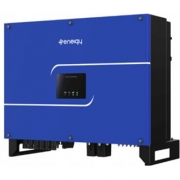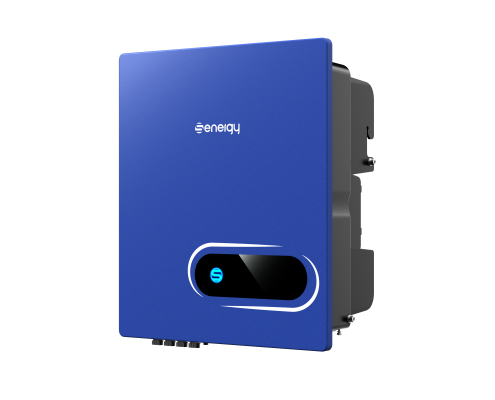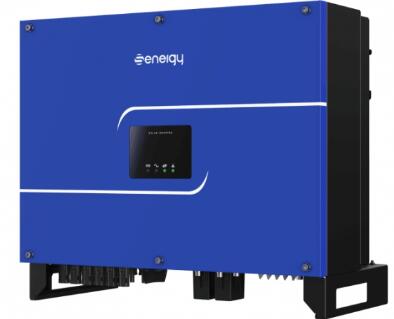How to Choose The Right Size Solar Power Inverter
As you likely know, solar cells produce direct current (DC) electricity, which is then converted to alternating current (AC) electricity by a solar power inverter. Converting energy from DC to AC allows you to deliver it to the grid or use it to power buildings, both of which operate with AC electricity. When designing a solar installation, and selecting the inverter, we must consider how much DC power will be produced by the solar array and how much AC power the inverter is able to output (its power rating).
This article will discuss some critical considerations for solar projects to ensure that the inverters in your designs are appropriately sized.
Specifically, we’ll examine the relationship between the amount of energy your solar array produces and the amount of power your inverter can output, and we’ll introduce the concept of inverter clipping.
Understanding the DC-to-AC Ratio
The DC-to-AC ratio — also known as Inverter Loading Ratio (ILR) — is defined as the ratio of installed DC capacity to the inverter’s AC power rating. It often makes sense to oversize a solar array, such that the DC-to-AC ratio is greater than 1. This allows for a greater energy harvest when production is below the inverter’s rating, which it typically is for most of the day.
The power lost due to a limiting inverter AC output rating is called inverter clipping (also known as power limiting).
How to Prevent Inverter Clipping
While oversizing the solar array relative to the inverter’s rating can help your system capture more energy throughout the day, this approach is not without costs.
“Either spend money on an additional inverter or lose energy harvest to inverter clipping.”
An effect called inverter clipping, sometimes referred to as power limiting. When the DC maximum power point (MPP) of the solar array — or the point at which the solar array is generating the most amount of energy — is greater than the inverter‘s power rating, the “extra” power generated by the array is “clipped” by the inverter to ensure it’s operating within its capabilities.
The inverter effectively prevents the system from reaching its MPP, capping the power at the inverter’s nameplate power rating.
To prevent this, it’s crucial to model inverter clipping to design a system with a DC-to-AC ratio greater than 1, especially in regions that frequently see an irradiance larger than the standard test conditions (STC) irradiance of 1000 W/m2 (higher levels of irradiance lead to higher power output).
The US Energy and Information Administration (EIA) states, “for individual systems, inverter loading ratios are usually between 1.13 and 1.30.”
For example, consider a south-facing, 20°-tilt ground mount system in North Carolina (35.37° latitude) with a 100 kW central inverter. If we design the system with a DC-to-AC ratio of 1, it will never clip; however, we will also not fully utilize the AC capacity of the inverter. We have two options. Either spend money on an additional inverter or lose energy harvest to inverter clipping.
Knowing how much energy is clipped allows a designer to understand how effective the oversizing scheme is at increasing energy harvest, and ultimately determine what system configuration is the most cost-effective.
Which Input Voltage Do I Need?
The input voltage of the inverter depends on the inverter‘s watt rating. For inverters with a relatively low power rating like 100 watts, there are three input voltages: 12V, 24V, or 48V. You can choose the voltage depending on your electrical usage needs, but note that:
ㆍThe solar panel, inverter, and battery bank should all have the same input voltage
ㆍThere are no 24V batteries on the market, rather they are created by joining two 12V batteries in a series connection
What is Inverter Stacking?
Inverter stacking is the practice of wiring two or more inverters to increase the output voltage or power. This can only be done if the inverters being stacked are compatible, so it’s vital to check the manufacturer’s specifications to ensure inverter compatibility.
When wired in a series connection, it increases the system’s output voltage. When wired in parallel, the effect is an increase in power in terms of watts.
It should be noted that the largest 48V battery-based inverter stacks top out at 60kW. While this is usually more than enough for residential power requirements, going beyond 60kW will require switching to a higher voltage inverter.
Key Takeaways
ㆍOversizing a solar array relative to a solar power inverter’s rating (DC-to-AC ratio greater than one) allows for increased energy harvest throughout most of the day, especially in the morning and late afternoon.
ㆍWhen a DC array produces more energy than the inverter is rated to handle, the inverter clips the excess power and caps its output at its rated power (an effect known as inverter clipping).
ㆍAn alternate approach to increase energy production while avoiding inverter clipping would be to include another inverter. When deciding what approach to take, designers must consider the trade-off between the cost of purchasing and installing an additional inverter compared to the value of the energy that will be lost due to inverter clipping if they oversize the solar array.
ㆍWhen estimating the energy production of a solar project design, it’s important that your performance simulations take inverter clipping into account, in order to ensure production results accurately reflect the system size of the design.
We are an inverter supplier. If you are interested in our products, please contact us now!






